Doing an ant PhD: Lívia Pires do Prado
Lívia Pires do Prado is a 31 years old Brazilian myrmecologist. She is currently working on her PhD thesis in Zoology at the Universidade Federal do Pará and Museu Paraense Emílio Goeldi (Brazil), under the guidance of Dr. Rogério R. Silva and co-supervision of Dr. Rachelle Adams and Dr. Carlos Roberto Brandão. She is interested in studying the diversity and distribution of ant species in the Neotropical region, using taxonomic and ecological approaches. She is also interested in fieldwork, collection curation, and scientific dissemination. Here, she talks about her PhD thesis and her passion for ants, especially for the genus Megalomyrmex.
An Interview compiled by Phil Hönle, Patrick Krapf, and Stephanie Wendt
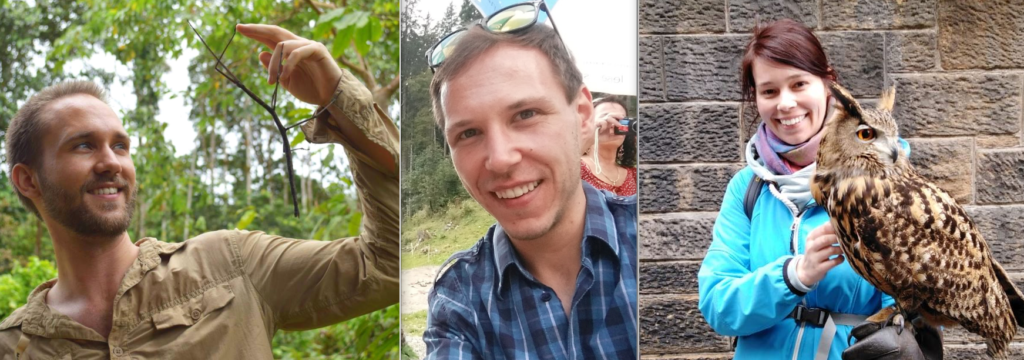
MNB: What is the topic of your PhD thesis?
LPdP: I am studying taxonomy and natural history of the genus Megalomyrmex and evaluating how the different reproductive strategies influence the dispersion and distribution patterns of these species.
MNB: In which year of your PhD studies are you now?
LPdP: I’m in my third year.
MNB: And why ants?
LPdP: I only became interested in ants after I started working with them. When I started studying biology in 2008, I wanted to work in the area of education and was interning at a very cool company that was adapting science and biology books for people with visual impairments. Since this internship was only in the afternoon and I studied at night, I had mornings free. At that time, an opportunity arose to intern in the mornings at the Museu de Zoologia da Universidade de São Paulo (MZSP), helping Flávia Esteves to mount the ants she analyzed in her PhD research. I immediately enjoyed the academic environment, the science talks we had in the lab, and working with the collection. A few months later, I left my other internship and spent most of my time at MZSP. I was very lucky because I had an incredible time at the MZSP. I had the opportunity to work with the head of the laboratory, Carlos Roberto Brandão, who shared all his knowledge about ants, myrmecological history, and collections with me every day. Rodrigo Feitosa and Flávia Esteves taught me about morphology and taxonomy and reviewed my identifications and Rogério R. Silva and Mônica Ulysséa constantly organized field expeditions throughout the incredible regions of Brazil This contact with the ants deposited in the MZSP collection and with the fieldwork aroused my interest in studying the morphological and behavioral diversity of the ants, which is fascinating!
MNB: I can imagine that! How do you feel about field work?
LPdP: It is definitely one of my favorite parts of science! In my opinion, fieldwork complements laboratory work and makes it possible to understand the complexity of the environment and the importance of conservation. In addition, there are many issues that we can only resolve by looking at the natural history of species. That was one of the reasons why I am developing my PhD research with Rogério R. Silva and Rachelle Adams. My advisors have a lot of experience with and interest in fieldwork, so I have had many opportunities to plan and participate in field expeditions, especially in the Amazon! We are constantly planning and writing collection projects. Of course, this fieldwork must be accompanied by material curation so that this data is processed and made available.
MNB: Yes, I love field work too. And for identifying ants, do you use a key?
LPdP: It’s part of my routine and I really enjoy doing it. As it is not a trivial task, I also like to use the descriptions because they are more detailed and provide information about morphological variation and distribution. I also like to compare them to the material deposited in the collection.
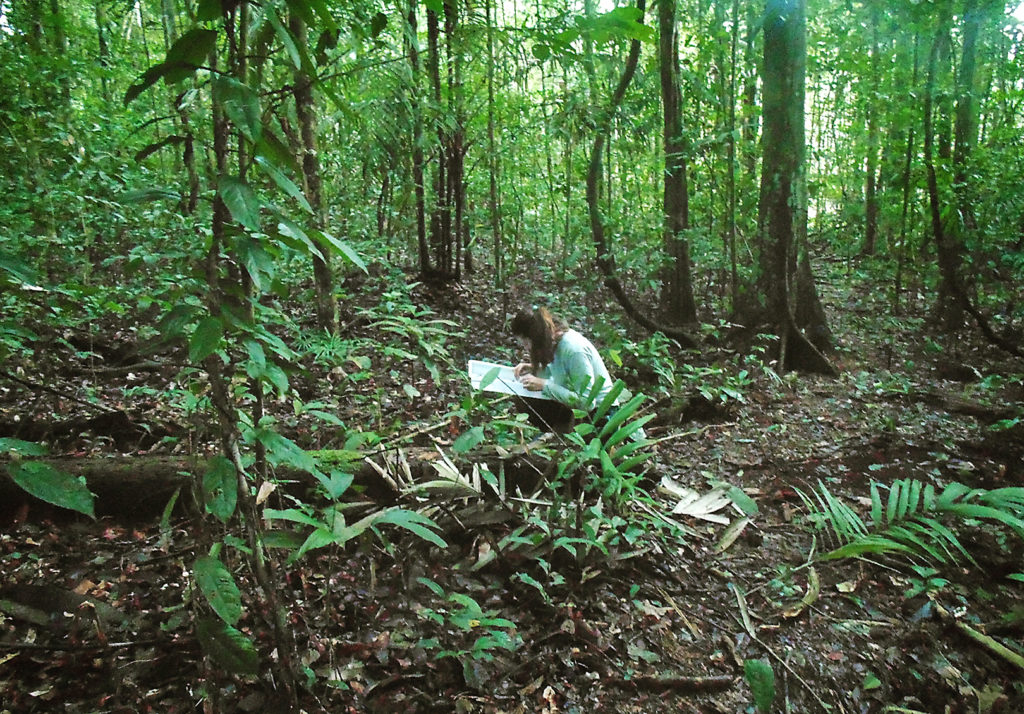
MNB: Do you work in the wet lab too?
LPdP: Not yet.
MNB: Have you been involved in any of the -omics approaches, and what was your experience?
LPdP: Not yet, too.
MNB: Did you acquire your statistics knowledge in university courses, from your supervisor, or on your own?
LPdP: My knowledge of statistics is still basic. I have started studying this topic more in depth now during my doctorate. I have learned statistics through all the ways that you mentioned above and also by exchanging ideas and discussing papers and book chapters with my colleagues. I cannot fail to mention the help of my great friend and doctoral fellow Joudellys Andrade Silva, who patiently answers my questions and discusses this topic with me all the time.
MNB: What is the ideal frequency of meeting your supervisor for discussing your research from your point of view: daily, weekly, monthly?
LPdP: I think that for each person this is different. I prefer to schedule meetings when I need to discuss something in detail or after accumulating data from my research to discuss ideas for my next steps, as well as when I am finishing a paper or a proposal.
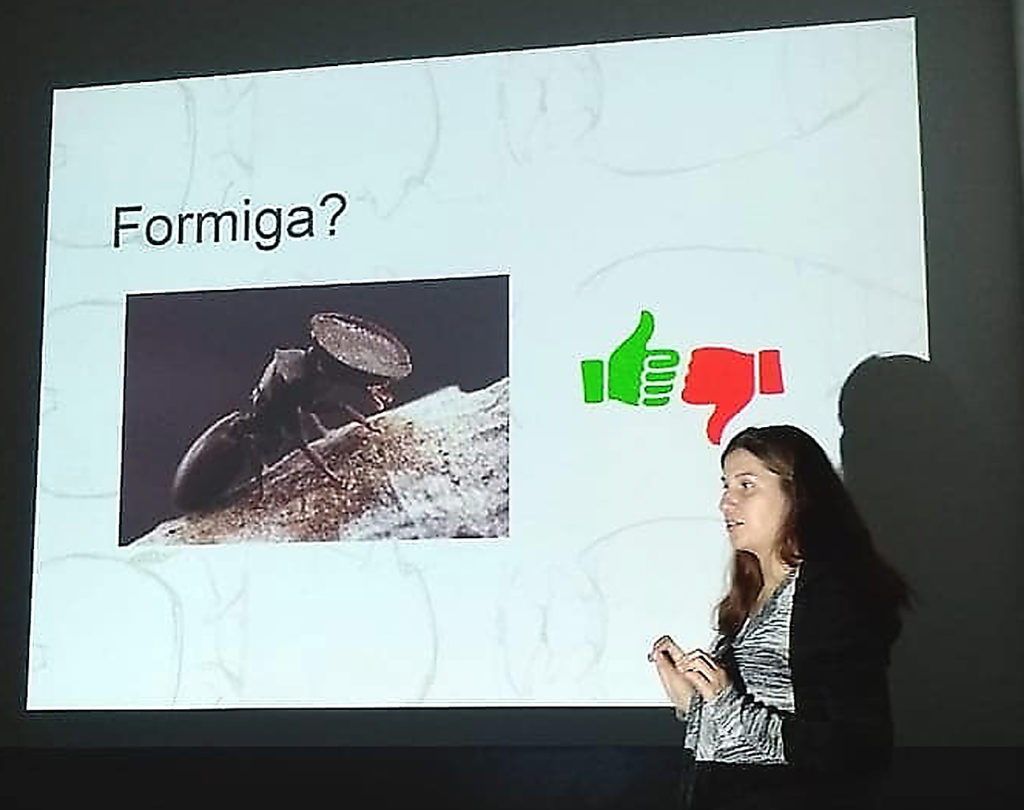
MNB: True. And if you have a great idea, how do you find out if it’s really great: sitting down and thinking, discussing with your supervisor, discussing with colleagues from the group, discussing with someone not into science?
LPdP: I like to discuss ideas with my colleagues. I find it interesting to discuss with colleagues who work in different areas or with different taxonomic groups, as they always ask unexpected questions, which helps me develop my ideas better.
MNB: How many papers do you read in an average week?
LPdP: This varies a lot and depends on my stage of work, but I always try to start the day by reading something.
MNB: In an ideal world, is the working group you belong to small or large?
LPdP: Medium, but well-diversified, including people with all levels of experience.
MNB: And ideally, is your uni close to your field work site or in an urban area?
LPdP: If you had asked me that a few months ago, I would say near a field work site, but now I think it doesn’t matter. First, because I like to vary the collection site and second, because it is possible to execute interesting studies and discoveries both in urban areas and in more conserved places. For example, after I read about the BioSCAN project, which is studying the Diptera fauna of Los Angeles and making many interesting discoveries, I was very excited to think about how it could work for ants.
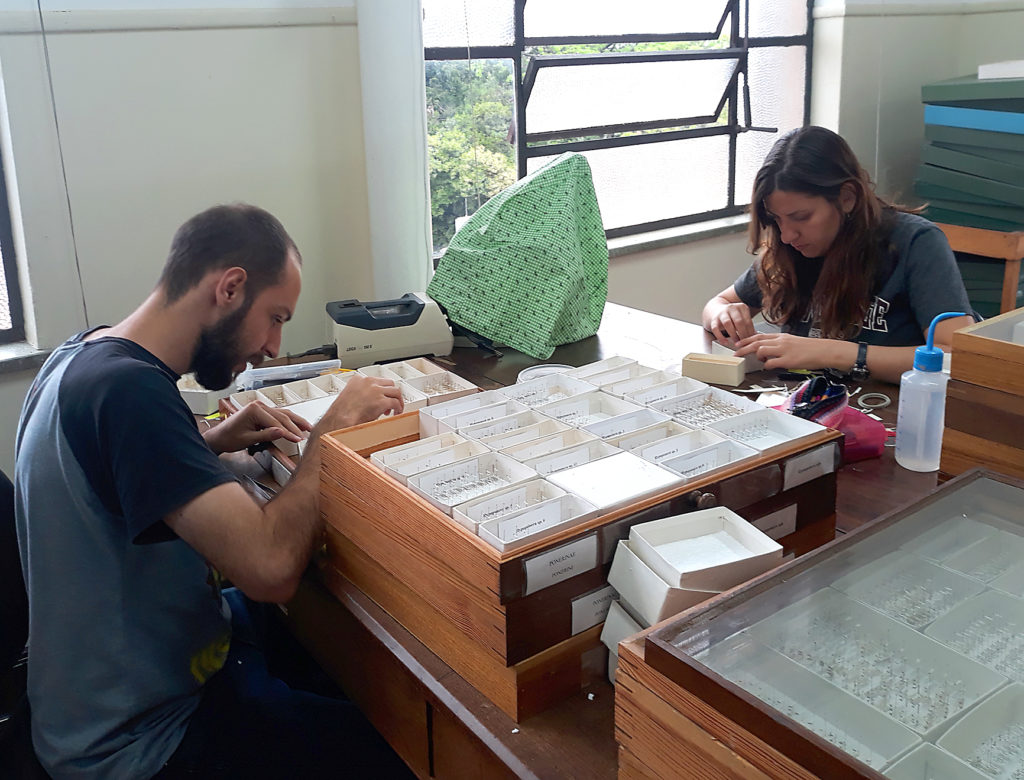
MNB: Wow that is really interesting. Now a slightly different topic: Have you profited more from attending conferences with narrower or with broader scope?
LPdP: I have profited from conferences with a more restricted scope, such as the Simpósio de Mirmecologia: An International Ant Meeting, which takes place every two years in Brazil. I have learned a lot of things, met researchers, and made friends. I always come back very excited and with a lot of ideas to apply to my research.
MNB: What is most relevant to you at a conference: attending talks, giving a talk, meeting senior scientists, meeting other students?
LPdP: It is difficult to choose one, they all seem equally important and complementary. I really do not know.
MNB: Did you ever participate in a science slam and if so, what was your experience?
LPdP: Not yet, but I hope to participate one day.
MNB: If you would get 100,000 Dollars to spend on your research project, what would you do with it?
LPdP: Wow! I would organize a collection expedition in places in the Amazon that have never been accessed before, which is where the biggest knowledge gap for Megalomyrmex is. It would be like those legendary expeditions that the first naturalists went on, in which we would spend months in the field with a diverse team, including myrmecologists from all areas (behavior, systematics, ecology, and ethnobiology) and would also hire designers and photographers to document the entire expedition. Then, we would spend the next few years exploring and publishing that data.
MNB: What helps you best in your spare time to relax from work?
LPdP: For fun, I like to watch Samba and Chorinho performances (music genres from Brazil) and go to the stadium to watch soccer matches of my team, the Corinthians, with my friends, of course.
MNB: How do you celebrate successes like getting a paper accepted, a proposal granted, or the like?
LPdP: I call my friends to tell them and then arrange a celebration!
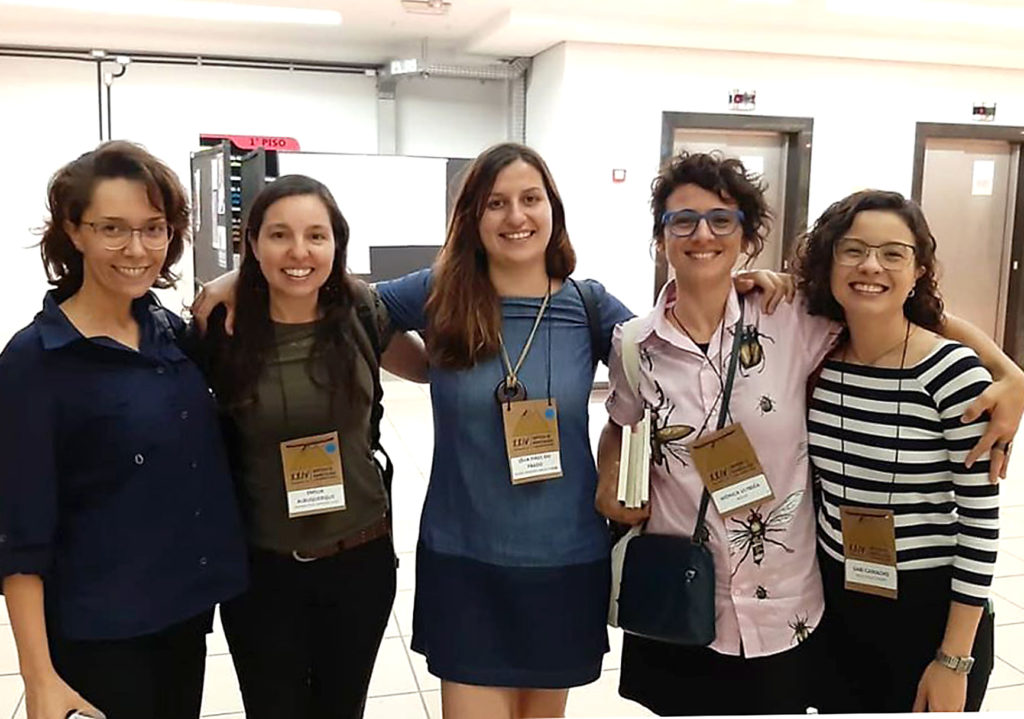
MNB: What is your personal trick to get over periods of low(er) motivation?
LPdP: Walking alone at the end of the day solves a good part of my problems.
MNB: What do you do to get over frustration about what you consider as unfair criticism by a reviewer?
LPdP: I usually take a break for a couple of days, so I can act more rationally. Then, I start thinking about it and try to take advantage of what really makes sense and, if possible, I come up with a solution. Then, I remember that when I’m reviewing or helping someone, so I don’t make the same kind of mistake.
MNB: And if you could turn back time – what is the one thing you would do differently when starting your PhD thesis again?
LPdP: I would have focused on studying reproductive castes from day one.
MNB: And would you like to stay in science?
LPdP: For sure. However, in my country, science has become increasingly devalued and funding has decreased dramatically. I have seen many colleagues giving up their careers and that worries me.
MNB: If you will be supervising PhD students yourself, what will be the most important thing you will expect from your students?
LPdP: A collaborative spirit. I think in a laboratory you need to have all kinds of profiles for the group to work well, and you don’t need people who are not interested in collaborating or helping others. My experiences with colleagues with individualistic attitudes made me realize that besides not helping, they also demotivate the group.
MNB: That sounds great. And tying to this, what will be the most important thing you will want to take care of in supervising?
LPdP: Participating in the routine of students in the laboratory. I think this helps to break some of the formality and create a bond of trust, which is important for the development of research, the exchange of ideas, as well as for determining when students need help.
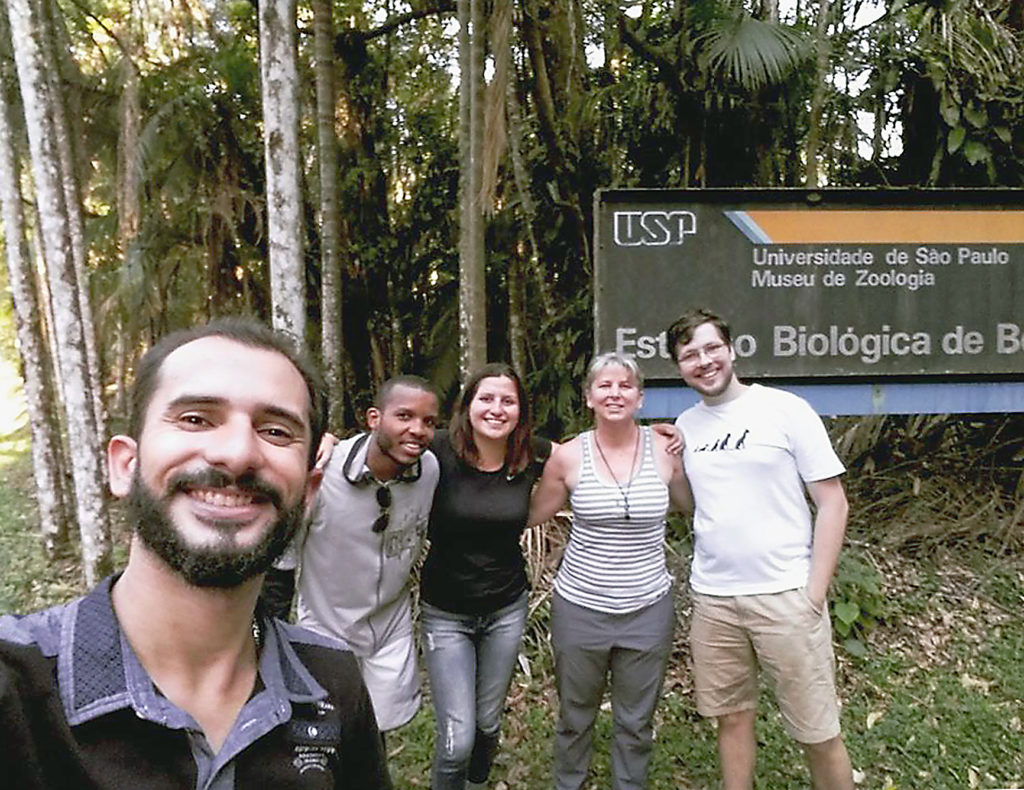
MNB: Which other scientists (PostDocs, PhD students) would you like to be featured in a Myrmecological News interview?
LPdP: Several, but some of them would be:
1) Jignasha Rana, PhD Student, George Washington University
2) Alissa Geisse. PhD Student, Ohio State University
3) Victoria Sadowski. PhD Student, Ohio State University
4) Yuanmeng Miles Zhang, PostDoc, University of Florida
5) Antônio Queiroz, PostDoc, Universidade Federal de Lavras
6) Maria de Lourdes de Andrade, University of Basel
7) Maria Santina de Castro Morini, Universidade de Mogi das Cruzes
8) Roberto Guerrero, University of Magdalena
MNB: Wow, thanks for mentioning so many! 🙂
MNB: Original article or review article?
LPdP: Original article.
MNB: Reading or writing?
LPdP: Writing.
MNB: Writing or reviewing?
LPdP: Both.
MNB: Reviewing or considering criticism by someone else?
LPdP: Considering criticism by someone else.
MNB: The first or last 5% of time you spend with writing a manuscript?
LPdP: The last 5%!
MNB: Informative or sexy paper title?
LPdP: Informative paper title.
MNB: Table or figure?
LPdP: Figure.
MNB: Web of Science or Google Scholar?
LPdP: Google Scholar.
MNB: Journals financed by the author (open access) or the reader (subscription)?
LPdP: Open access.
MNB: Windows, OS, or Linux?
LPdP: Windows.
MNB: Command-line or graphical-user interface?
LPdP: Graphical-user interface.
MNB: Mouse or touchpad?
LPdP: Mouse.
MNB: Facebook or Twitter?
LPdP: Twitter.
MNB: Bus or bike?
LPdP: Bike.
MNB: Breakfast or dinner?
LPdP: Breakfast.
MNB: Sun or rain?
LPdP: Sun.
MNB: Diploid or haploid?
LPdP: Diploid.
MNB: Sting or acid?
LPdP: Sting.
MNB: Social parasite or host?
LPdP: Social parasite. If it’s Megalomyrmex symmetochus, even better!
MNB: Your favourite ant paper?
LPdP: This one is difficult, so many great papers are published all the time, but I think that the paper on the taxonomy and evolution of Cephalotes published by De Andrade & Baroni Urbani (1999) is one of my favorites. Cephalotes is an amazing genus from a morphological and behavioral point of view and this paper addresses the diversity of the genus in a detailed way.
De Andrade, M. L.; Baroni Urbani, C. 1999. Diversity and adaptation in the ant genus Cephalotes, past and present. Stuttgarter Beiträge zur Naturkunde. Serie B (Geologie und Paläontologie) 271:1-889.
MNB: Your favourite ant?
LPdP: My favorite species is Camponotus urichi, which is a beautiful species that I had the opportunity to observe in the wild.
MNB: …and if in another life you would be an ant, what ant would that be?
LPdP: I think Martialis heureka.
MNB: Thank you so much for this nice interview!
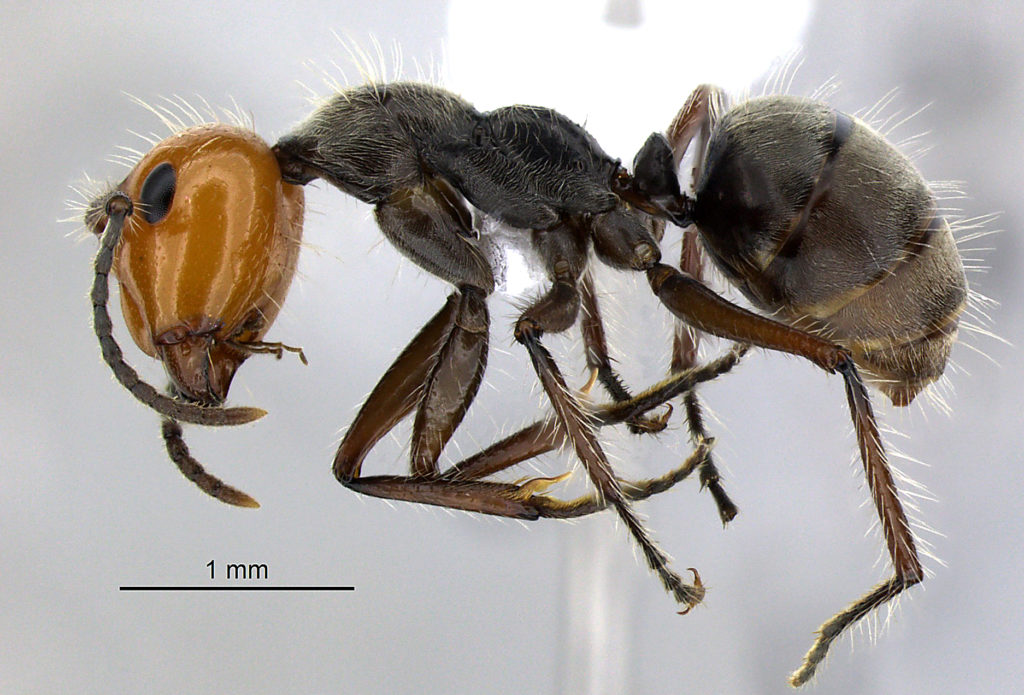



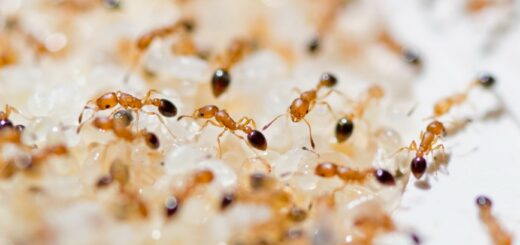
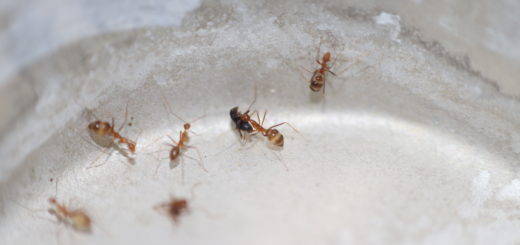
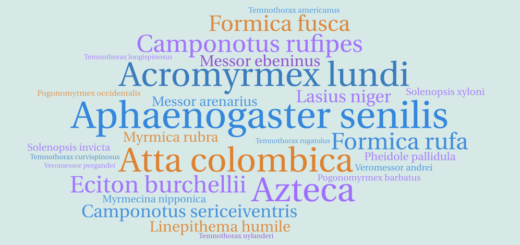
This is the first Camponotus sp. that I have ever seen missing the smooth profile along the notum of the thorax.
So happy and proud to read this. I’m a huge fan of Lívia’s work and personality! What a fantastic researcher!